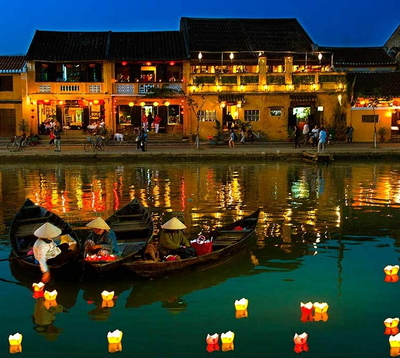10 Things To Do in Chinatown Saigon
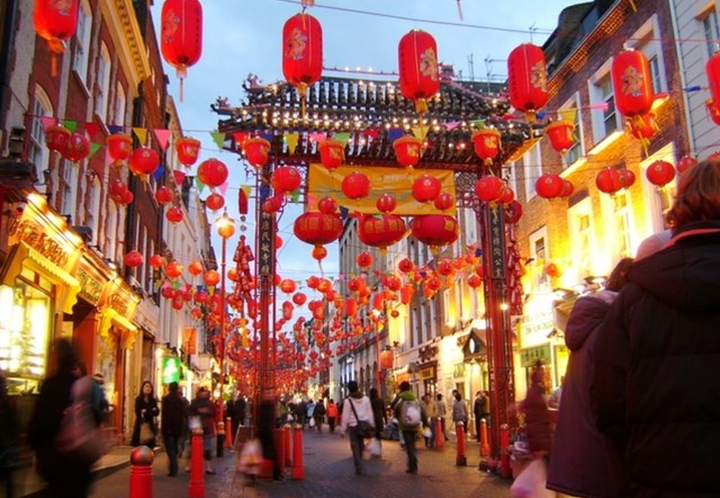
Chinatown Saigon (Chợ Lớn) - is one of the popular and biggest Chinatown in Ho Chi Minh City with a vibrant history. This place is the beauty of antiquity and modernity with local food and traditional markets.
The article will give you a tour of Chinatown Saigon from A to Z so you can understand why Chinatown Saigon is popular. Let’s get started!
Overview of Chinatown Saigon
Location
Chinatown Saigon is located mainly in Districts 5, Districts 11, and Districts 6. Chinese (mainly Teochew and Fujian) have lived in the China Town area of District 5 from about the 18th century to the present. In the 1950s, 90% of the population was Chinese. Up to now, only about 60% of Chinese people continue to settle here. Most of the Chinese in District 5 can be fluent in Vietnamese.
Why Should You Visit Chinatown Saigon?
When visiting Chinatown Saigon, you will be impressed by the extraordinary Chinese culture from architectural art, and the fusion cuisine. People here also hang red lanterns in front of their houses, which makes the town more Chinese. Thus, it brings a unique vibe to the rest of Saigon.
Top 5 Must-Visit Attractions in Chinatown Saigon
Binh Tay Market
Binh Tay Market is located in the heart of Cho Lon. This market was established by Quach Dam - one of the Chinese richest landlords in the late 1880s. The interesting thing about the Binh Tay market’s architecture is the combination of French styles and traditional designs of Chinese culture. Apart from the unique history and interesting culture, Binh Tan Market is home to Chinese and Vietnamese delicacies.
If you are looking for extraordinary local food, Binh Tay Market will be your destiny. Especially, here is the top favorite breakfast area in Chinatown Saigon with a bunch of local food stalls. You can enjoy tasty rustic dishes such as Chinese roasted duck, Com Tam (Steamed Broken Rice), Pha Lau (Beef Offal), Goi Cuon (Spring Rolls), and Com Ga (Chicken Rice),...
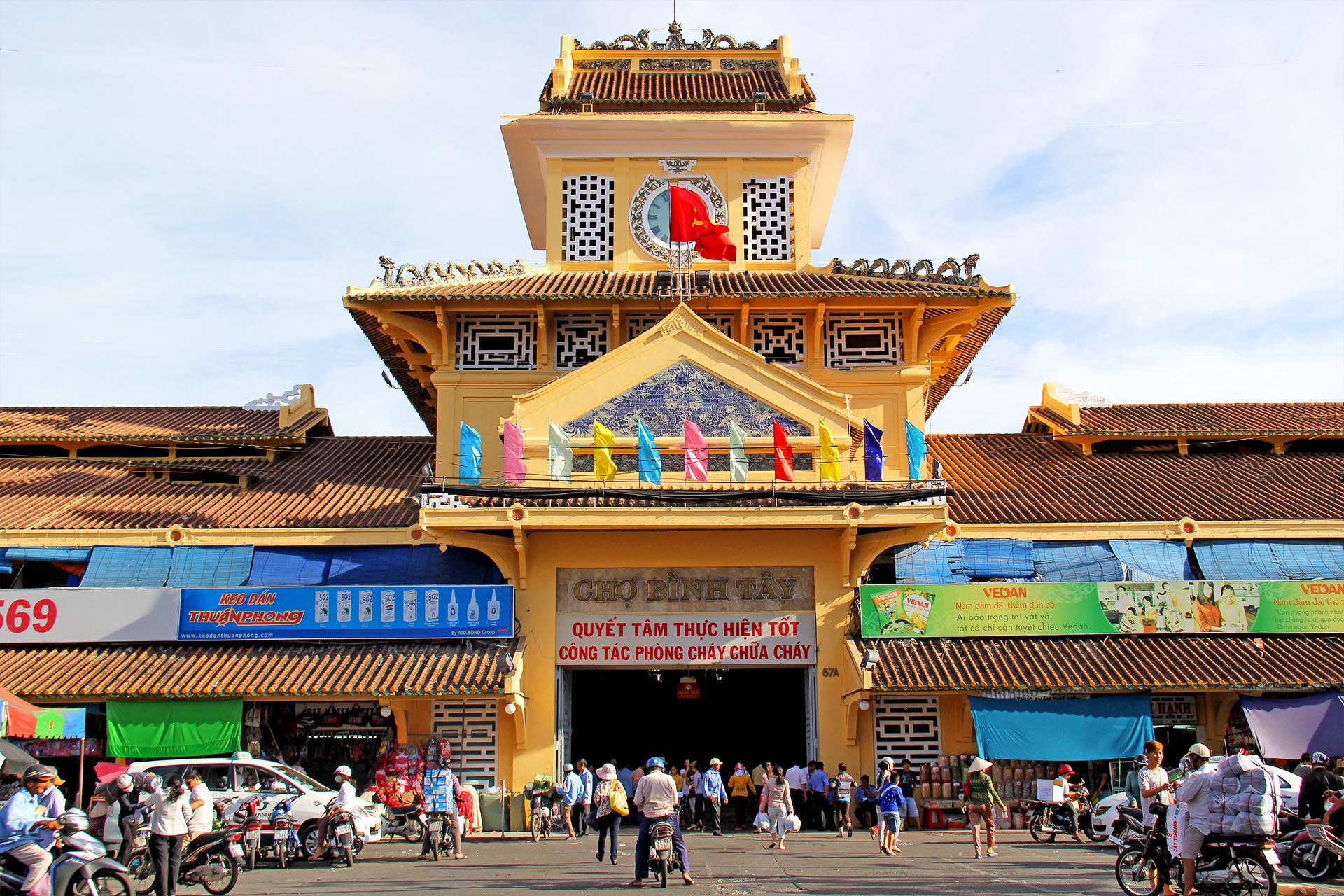
Thien Hau Temple
Chinatown Saigon is the most prominent place symbolizing Chinese religious life with pagodas and temples. Thien Hau Temple was founded in 1760 by the Cantonese community. Therefore, the Chinese vibe embraces the architectural design for the exterior and interior.
This temple is also honored to be not only for its long life but also as the most impressive attraction for visitors. Particularly, each corner of the temple has its beauty that "hypnotizes" every visitor.
Lots of people believe that Thien Hau Temple is a place, where they can pray for good luck. Therefore, once you get here, you could learn how to pray or write down your wishes on paper and hang them with a ring to wish for luck.
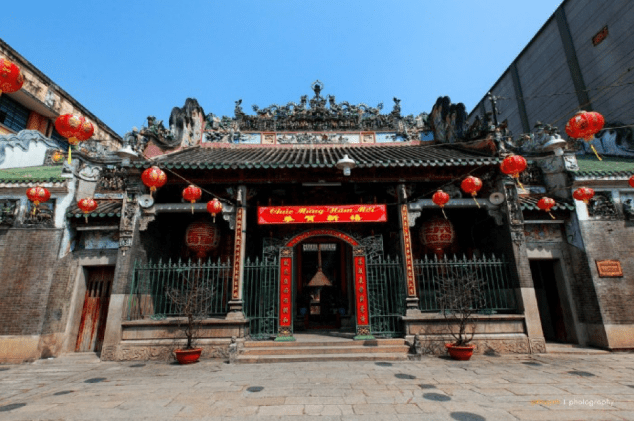
Cha Tam Church
Another antique building you can admire when wandering around Chinatown Sai Gon is Cha tam Church. This is one of the ancient churches of Saigon with more than 100 years old. Moreover, what makes this church so extraordinary is its blend of Asian and European architectural styles.

Lantern Streets
Do not miss Lantern Streets when you are in Chinatown Saigon. This place is likened to a prosperous place with a range of luxury shops. It looks like another version of Hong Kong. If you are lucky enough to visit Sai Gon on special occasions such as Luna New Year, Mid-Autumn Festival,... You can admire the vivid street, which is filled with colorful lanterns along the way.
If you want to immerse yourself in the Chinese vibe, you could wear Chinese costumes and take photos. I am sure that you will be one of a kind and create unforgettable memories.

Tam Son Hoi Quan
Tam Son Hoi Quan was constructed in 1893 during the Gia Khanh era. The surrounding space of Tam Son Hoi Quan consists of other religious buildings such as temples, churches, and pagodas. Each of them owns the identity that differentiates it from others. You will feel a sense of peace and relaxation when dropping by here.
These places are just a few examples of wonderful places you can visit in Chinatown Saigon. Besides, if you want to enjoy the “specialty” of Saigon, you can wander around the city at night.
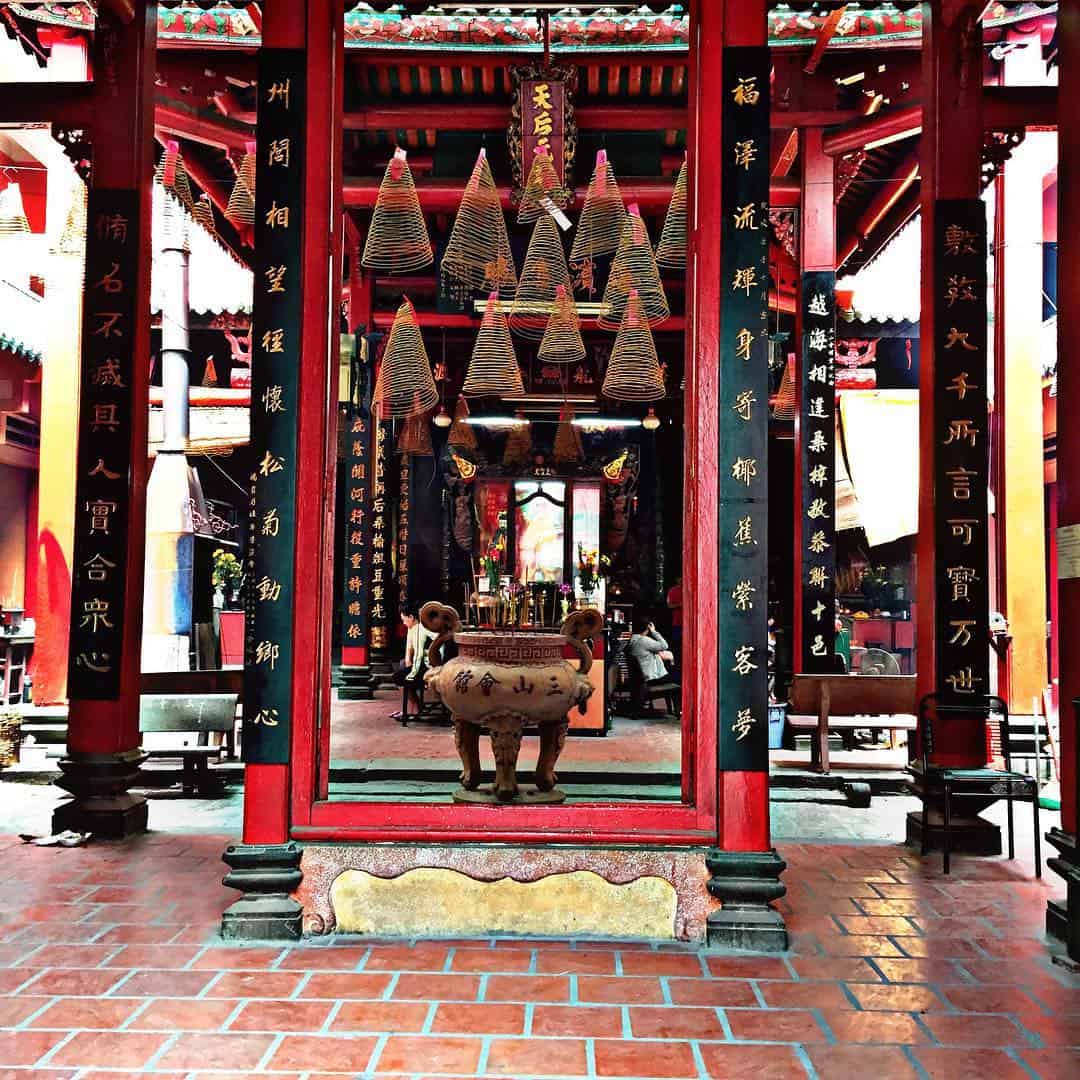
Top 5 Delicious Local Dishes in Chinatown Saigon
Fish Noodle Soup
This is one of the signature dishes in Chinatown Saigon you should try. Fish noodle soup uses Chinese-style noodles, which are wider and softer than Vietnamese noodles. The main ingredients are thin slices of snakehead fish, and opalescent fish slices with white noodles. The impression of fish noodle soup lies in its bouillon, which creates a pleasing smell. The soup is made from pork bones and snakehead fish to enrich the flavor and create a natural sweetness to the dish.
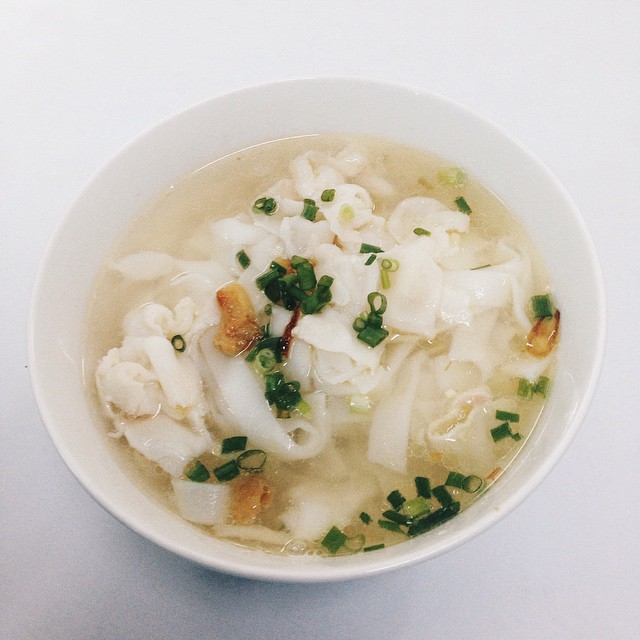
Stewed Duck Noodle Soup
Stewed duck noodle soup is one of the most nutrient-dense foods. A bowl of stewed duck noodle soup consists of stewed duck meat with diverse medicinal herbs. Before stewing, the duck meat is seasoned with aromatic herbs and spices. Then, the duck meat is fried and stewed, which makes the meat softer and smell good.
To reduce the fat, the chefs put bok choy on top of the bowl so that the diners can feel healthier while enjoying the dish. The broth has a gentle sweetness with a nice scent like Chinese medicine.
If you are looking for a dish to boost your energy after a long day of fun, this is the perfect dish in Chinatown Saigon.
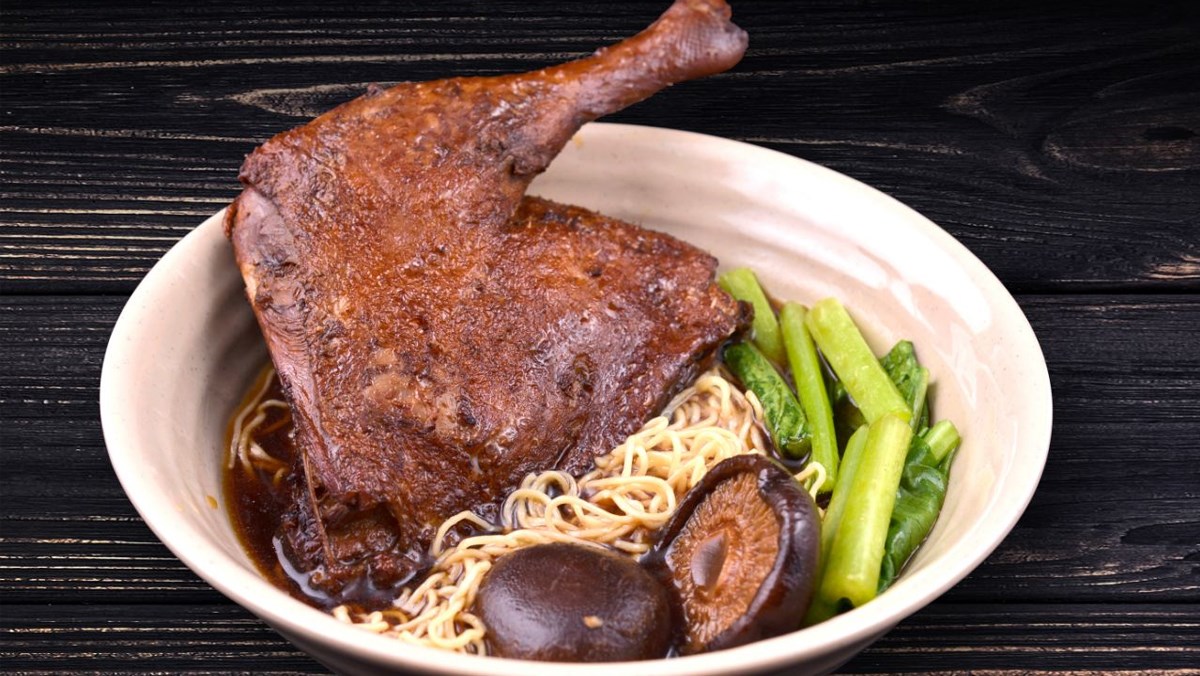
Jiao Zi
Jiao Zi is a popular type of Chinese dumpling. There are various ways to enjoy Jiao Zi such as steamed Jiao Zi, fried Jiao Zi, or eating noodle soup. The dumpling fillings are also processed in different ways to fit with Vietnamese cuisine. You can eat prawns and mince pork dumplings, chives, and minced pork dumplings,
In the past, when Chinese New Year’s Eve came, Chinese people usually gathered together and made Jiao Zi celebrate this occasion. At present, Jiao Zi has become a common dish in daily meals. You can enjoy a piece of Jiao Zi at any time of the year.
If you are a fan of fusion cuisine, you cannot miss this dish when traveling to Chinatown Saigon.
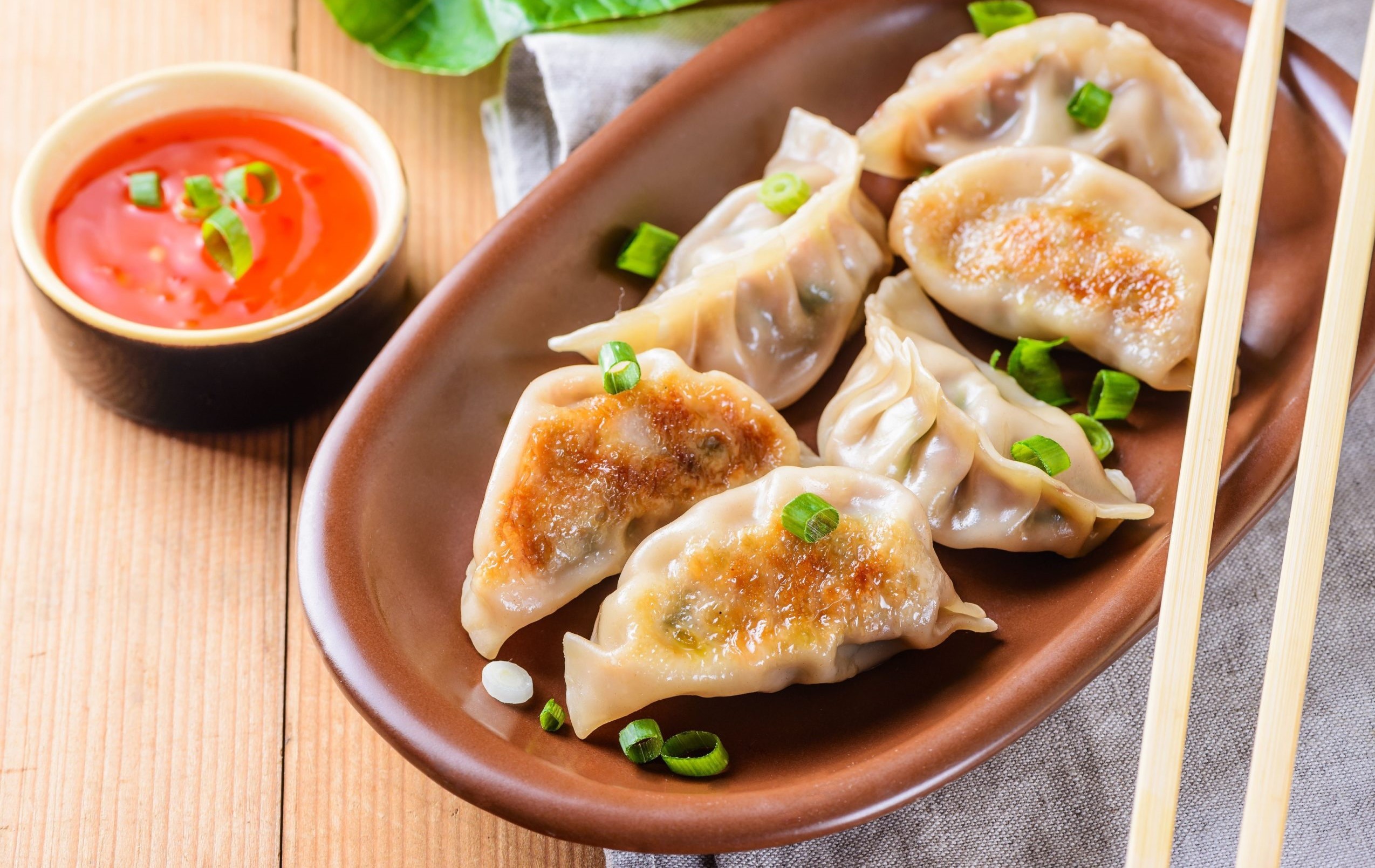
Chili Paste Noodle Soup
This dish comes from Teochew, China. The Chinese noodles are wider and softer than the Vietnamese noodles we usually eat. The highlight of this dish is the chili paste, which is cooked with a unique recipe including more than 20 ingredients such as cinnamon, lemongrass, chili and curry, and garlic,...
To keep the dish fresher and greener, many kinds of raw vegetables are served with the dish.
For those who love the spicy feeling, Chili paste noodle soup will be the first and best dish in Chinatown Saigon you have ever tried.

Teochew Porridge
Traditionally, Teochew porridge was a popular dish served by working-class people. However, after being arrived in Vietnam in the 20th century, the dish has become a unique food in Chinatown Saigon. You can try a bowl of Teochew porridge for those who like the gentle taste. This dish is made from plain rice soup and soused with pork broth. The broth is cooked delicately with tofu, pork, pig blood curd, pickled mustard greens, and water,...
When you taste the dish, you will feel the slight sweetness of the broth, which is simmer for a long time.
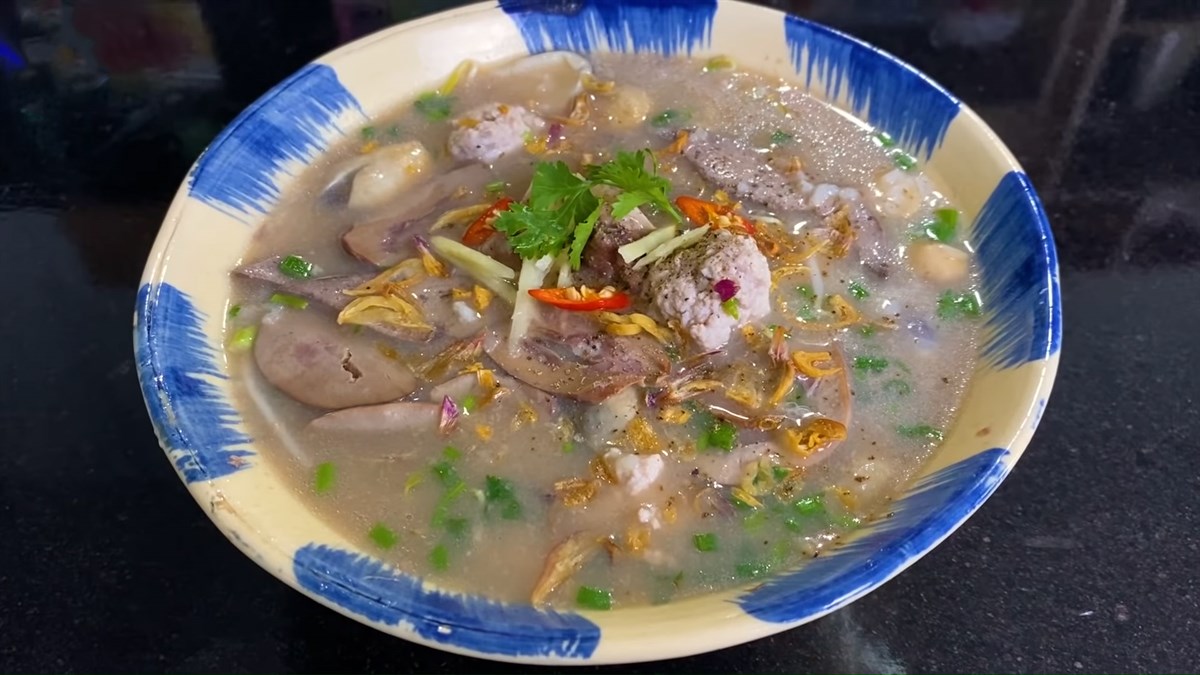
In conclusion, the perfect combination of Vietnamese and Chinese cultures enriches the regional heritage. Chinatown Saigon is a place that reflects the beauty of vibrant history. To find out more about the valuable experience of history and delicacies. Let’s arrange the trip and explore with us today! You can see the reference here







